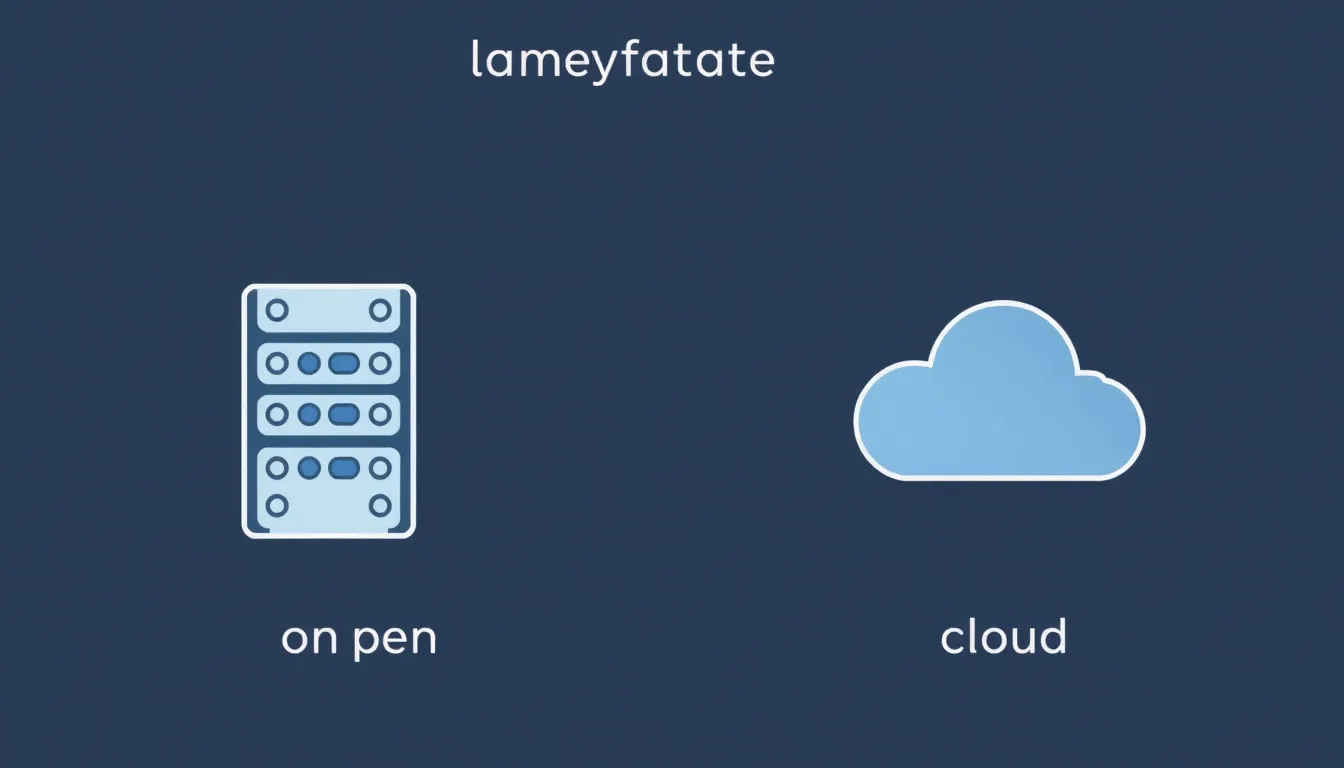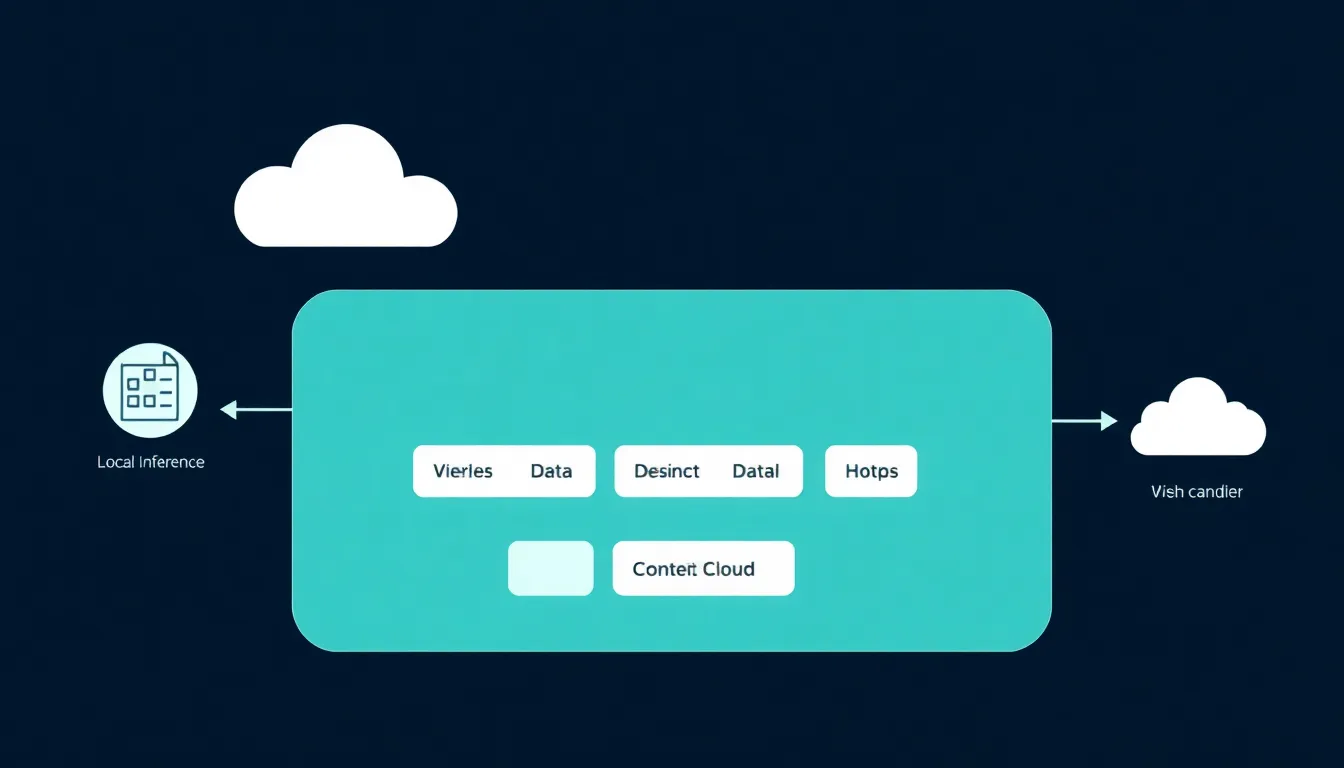Introduction
In an era where enterprise AI must marry performance with governance and total cost of ownership, developers are increasingly leaning on open source reasoning to control latency, costs, and roadmaps. DeepSeek-R1-0528 inference Providers sits at the intersection of open source flexibility and enterprise scale, delivering a model that scales from local labs to global production footprints while keeping pricing transparent. This guide previews what you need to know to choose the right deployment path, from pricing to regional availability, hardware requirements, and practical steps to get started.
To quote the team behind the work:
With its impressive 87.5% accuracy on AIME 2025 tests and significantly lower costs, it’s become the go-to choice for developers and enterprises seeking powerful AI reasoning capabilities.
What you will learn in this guide:
- Pricing models and token costs including the DeepSeek Official API
- Deployment options across cloud providers like Amazon Bedrock (AWS) and local runtimes
- Regional availability including US East (N. Virginia), US East (Ohio), and US West (Oregon)
- Hardware requirements including 64K context length and GPU recommendations such as RTX 4090 or RTX 3090
- Practical steps from sandbox testing with the official API to scale with enterprise providers
- Local deployment options including Hugging Face Hub, Ollama, vLLM and Open Web UI
Asif Razzaq and the team share real world insights and strategies for teams evaluating DeepSeek-R1-0528 inference Providers. Beyond the hype the guide also discusses regional and hardware considerations that affect cost per run and latency, helping teams plot a realistic roadmap that fits their governance and procurement cycles. Ready to dive in now.

| Provider | Main API price per 1M input tokens | Output price per 1M tokens | Context length | Notable notes |
|---|---|---|---|---|
| DeepSeek Official API | $0.55 | $2.19 | 64K | Off peak discounts may apply; discount window is daily from 16:30 to 00:30 UTC; widely available |
| AWS Bedrock | $1.35 | $5.40 | 64K | DeepSeek on Bedrock; regions include US East N. Virginia US East Ohio and US West Oregon; custom model import pricing varies by usage |
| Together AI | Not published per 1M input | Not published | Not specified | Serverless API available with pay as you go pricing; Together Reasoning Clusters priced by cluster size and contract term; contact for details |
| Novita AI | $0.70 | $2.50 | 64K | New users receive 10 free credits; GPU options include RTX 4090; on demand pricing plus subscriptions |
| Fireworks AI | $3.00 | $8.00 | 64K | Two tiers Fast Deployment and Basic Deployment; same model across tiers |
| Hugging Face Hub | 8B model: $0.20 | 8B model: $0.60; 67B model: $1.00 | 64K | Hub hosts multiple sizes; 8B and 67B pricing shown; open source access via Hub |
| Ollama | Free | N/A | 128K | Local deployment; MIT License; hardware intensive; 128K context available in open source version |
| vLLM | Free | Free | 64K | Local deployment option; cost effectively run on premises; supports 64K context |
| Open Web UI | Not published | Not published | 64K | Open Web UI option; pricing depends on hosting provider or setup |
Hook
In an era where enterprises need reliable reasoning at scale, teams are weighing where to run DeepSeek R1 0528 and how these decisions shape costs, latency, and governance. The promise of an open source reasoning model that can match or beat proprietary options creates both excitement and a practical challenge: how to choose the right provider for real world workloads without sacrificing control or security. The answer hinges on one simple truth about inference today that many teams overlook until the numbers hit the table. DeepSeek R1 0528 inference Providers puts flexibility and transparency at the center, letting you decide when to run locally, in the cloud, or in a mixed environment while keeping a clear line of sight on pricing and performance.
Asif Razzaq and the team behind the project remind us that this is not a theoretical debate. It is a strategic choice that affects every line of business from data governance to procurement cycles. The stakes are high because the model is not just about accuracy it is about who can access it when and where.
Insight
DeepSeek R1 0528 sits at the crossroads of flexibility, performance and governance. It elevates open source reasoning by offering a large context window and a price model designed for scalable production.
The model has demonstrated strong results on standard benchmarks and a path that suits both labs and large teams wanting enterprise grade control.
The guiding sentence you will hear from experts is that the key is choosing the right provider based on your specific requirements for cost, performance, security and scale. Start with the DeepSeek official API for testing and then scale to enterprise providers as your needs grow.
The product line includes an eighth billion parameter efficient version that runs on consumer hardware and comes with a distilled model option. This means teams can evaluate on standard GPUs such as RTX 4090 or RTX 3090 with sufficient RAM before committing to cloud offerings.
With 64K context length the mind can follow longer reasoning chains which matters for complex prompts and multi step problems. the narrative is supported by quotes from the team including the line about its broad appeal for resource constrained deployments.
Evidence
There is a growing body of evidence that DeepSeek R1 0528 inference Providers can deliver value across open web UI, local deployment and cloud environments. Asif Razzaq has highlighted the practical steps that a team can take from testing with the official API to selecting an enterprise provider. The model has shown an 87.5 percent accuracy on AIME 2025 tests, and HMMT 2025 reported a notable improvement in performance. The pricing table is clear and public with DeepSeek Official API at 0.55 dollars per 1 million input tokens and 2.19 dollars per 1 million output tokens, a 64K context length and off peak discounts available daily from 16:30 to 00:30 UTC.
Regions for Amazon Bedrock availability include US East N Virginia, US East Ohio and US West Oregon. Novita AI GPU Instances offer hourly pricing for A100, H100 and H200 GPUs while SageMaker supports the ml.p5e.48xlarge instance as a minimum for commercial scale. DeepSeek R1 0528 Qwen3 8B is presented as an 8B parameter efficient version that runs on consumer hardware and its demand grows in parallel with Open Web UI local deployments. AWS Bedrock is noted as the first cloud provider to offer DeepSeek R1 as fully managed. Local deployment options include Hugging Face Hub, Ollama, vLLM, Unsloth and the Open Web UI platform. The practical takeaway is that pricing and availability are always evolving so verify current figures with providers.
“DeepSeek-R1-0528 has emerged as a groundbreaking open source reasoning model that rivals proprietary alternatives like OpenAI’s o1 and Google’s Gemini 2.5 Pro.”
“With its impressive 87.5% accuracy on AIME 2025 tests and significantly lower costs, it’s become the go to choice for developers and enterprises seeking powerful AI reasoning capabilities.”
“Prices are subject to change Always verify current pricing with providers.”
“The key is choosing the right provider based on your specific requirements for cost performance security and scale Start with the DeepSeek official API for testing then scale to enterprise providers as your needs grow.”
Payoff
The payoff is clear you gain control and clarity when you align a provider with your strategic goals. If your aim is rapid testing and cost visible development you can begin with the official API and then migrate to an enterprise provider that fits your region and compliance requirements. Consider the AWS regions US East N Virginia US East Ohio and US West Oregon for Bedrock deployments while local options from Hugging Face Hub Ollama and Open Web UI give you resilient fallbacks if you want to keep data in house. The pricing guidance remains straightforward 0.55 per 1M input tokens and 2.19 per 1M output tokens with 64K context and off peak discounts. These numbers are living figures that update as new offerings appear from Amazon Bedrock Microsoft Azure and other players in the market. The honest approach is to view the decision as a trade off between cost and capability and to test across providers until you find the best fit for your needs.
Conclusion
DeepSeek R1 0528 inference Providers unlock a path to practical open source reasoning at scale offering a balanced mix of performance governance and cost control. By testing with the official API and then expanding to cloud providers you gain the dual advantages of flexibility and resilience. With the active involvement of entities like Asif Razzaq and companies such as Hugging Face and Amazon Bedrock the ecosystem continues to mature. The story of DeepSeek R1 0528 is still being written as new regions hardware options and pricing models emerge every quarter.



Deployment options and strategy for DeepSeek R1 0528
Deploying DeepSeek R1 0528 requires balancing performance governance and cost across open source local deployments and cloud managed options. This section outlines practical deployment paths hardware considerations and strategy notes. The term DeepSeek R1 0528 inference Providers anchors the discussion and the goal is to help teams pick the right path for their workloads while keeping governance transparent.
Open source local deployment
-
Hugging Face Hub
A flexible local registry and runtime for sandbox testing and production workflows. It supports large context length and community driven weights and examples.
-
Ollama
A local runtime designed for running models on workstations or on prem servers with a comfortable workflow for iterative development.
-
vLLM
Local serving optimized for fast generation and reduced latency when running on consumer hardware or dedicated GPUs.
-
Unsloth
Open source serving environment crafted for scalable local deployments with simple configuration.
-
Open Web UI
A lightweight local UI that helps teams experiment with payloads and prompts in a privacy preserving sandbox.
Cloud and managed options
-
AWS Bedrock
Fully managed cloud hosting with regional availability including US East N Virginia US East Ohio and US West Oregon enabling scalable production deployments.
-
Together AI
Serverless API with pay as you go pricing offering Reasoning Clusters sized to workload and contract terms for enterprise scale.
-
Novita AI
GPU based offerings with on demand pricing plus subscriptions; supports 4090 class GPUs and higher for inference workloads.
-
Fireworks AI
Two tiers Fast Deployment and Basic Deployment delivering scalable open source inference with predictable pricing.
-
Nebius AI Studio
Cloud based studio offering managed model hosting and orchestration for teams seeking ease of operation.
-
Parasail
A flexible platform enabling rapid deployment across clouds with predictable pricing and governance features.
-
Microsoft Azure
Cloud option via Azure infrastructure providing integration with existing enterprise data and security controls.
Hardware notes and model options
-
Hardware requirements
For local and edge style deployments a RTX 4090 or RTX 3090 with approximately 24 GB VRAM is recommended for reasonable throughput. For larger workloads or cloud hosting consider A100 H100 or H200 GPUs.
-
Distilled Model Option
A distilled variant offers a lighter footprint enabling faster iteration and testing on modest hardware while preserving core reasoning capabilities.
-
8 B parameter efficient version
There is an 8 B parameter efficient version that runs on consumer hardware. It requires RTX 4090 or RTX 3090 with 24 GB VRAM and at least 20 GB RAM for quantized variants.
Context length and pricing notes
-
Context length
The model supports a 64 K context length which helps follow longer reasoning chains.
-
Off peak pricing
Off peak discounts are available daily from 16 30 to 00 30 UTC enabling cost effective experimentation.
-
Primary keyword and related keywords
DeepSeek R1 0528 inference Providers is the guiding term for deployment strategy while related keywords such as DeepSeek Official API 64K context length and 8 B parameter efficient model inform the practical choices.
Credibility and ecosystem
Key players involved in deployment and validation include Asif Razzaq Hugging Face Amazon Bedrock Together AI Novita AI Fireworks AI Nebius AI Studio Parasail and Microsoft Azure. Real world use cases span on prem labs to global cloud deployments and reflect the open source to enterprise continuum. Major figures and institutions cited in evaluations and ecosystem notes lend credibility to the deployment strategies discussed here.
Ready for production planning
The approach is to start with sandbox testing via the DeepSeek Official API and then scale to a cloud managed provider or a local heavy weight stack depending on governance security data residency and cost constraints. The flexible matrix allows teams to mix local and cloud deployments as needed while keeping 64K context length and off peak pricing in view for sustainable operation.
| Option | Pros | Cons | Typical Cost/SLA | Security Considerations | Ease of Setup |
|---|---|---|---|---|---|
| Local Open-Source | Full control of deployment; self hosted; customizable privacy; no vendor lock; strong community support | Requires on premises hardware and ongoing maintenance; scaling can be challenging without extra infra | Upfront hardware costs; no formal SLA; costs vary with usage and infra | Data residency control; encryption at rest and in transit possible; self managed security posture | Moderate setup; install local runtime options such as Hugging Face Hub, Ollama, vLLM, Unsloth, Open Web UI; offline testing available |
| Fully Managed Cloud | Scales on demand; managed updates; provider security controls; regional availability | Higher ongoing costs; potential data residency constraints; vendor lock risk | Pay as you go; typical per token pricing varies by provider; cloud SLA commonly around 99.9%+ | Shared responsibility model; cloud provider manages infra security; ensure proper IAM and network controls | Quick start; minimal setup; integrate via official API or hosted endpoints |
| Open Web UI | Privacy friendly sandbox; lightweight; runs locally without external hosting | Limited scale; not ideal for large workloads; depends on local hardware | Free or low cost when hosted locally; no external SLA; cost is hardware and energy dependent | Data mostly local; secure access needed; regular updates required | Easy setup for testing; clone repo and run locally with documented steps |
Regional Availability and Hardware Requirements
Deployment for DeepSeek R1 0528 inference Providers requires balancing regional availability pricing and hardware capacity to fit workload and governance needs.
Regional availability
- AWS Bedrock is presently available in US East (N. Virginia) US East (Ohio) and US West (Oregon).
- Off peak discounts are offered daily from 16:30 to 00:30 UTC enabling cost efficient experimentation.
Hardware notes
- For cloud and edge style variants use A100 H100 H200 GPUs to achieve strong throughput on larger prompts.
- For quantized and offline variants running on consumer hardware the RTX 4090 or RTX 3090 with 24 GB VRAM are recommended.
Regional and deployment considerations
- Region choices influence latency to users data residency and the cost per run.
- In practice choose a Bedrock region that minimizes network hops to your primary user base.
- Pricing differs by region and provider with US East Virginia often offering broad availability and competitive pricing for DeepSeek R1 0528 inference Providers.
Hardware and cost interplay
- The hardware selected affects throughput and cost per run.
- A100 H100 H200 GPUs deliver higher throughput for large scale workloads while RTX cards enable affordable local testing for quantized tasks.
Quotes
DeepSeek-R1-0528 inference Providers has emerged as a groundbreaking open-source reasoning model that rivals proprietary alternatives like OpenAI’s o1 and Google’s Gemini 2.5 Pro.
With its impressive 87.5% accuracy on AIME 2025 tests and significantly lower costs, it’s become the go-to choice for developers and enterprises seeking powerful AI reasoning capabilities.
Prices are subject to change. Always verify current pricing with providers.
The key is choosing the right provider based on your specific requirements for cost performance security and scale. Start with the DeepSeek official API for testing, then scale to enterprise providers as your needs grow.
Main takeaway
DeepSeek R1 0528 inference Providers is a flexible path for teams seeking governance and cost control. Region pricing and hardware choices together shape deployment options and the total cost of ownership. The key is choosing the right provider based on your specific requirements for cost performance security and scale. Start with the DeepSeek official API for testing, then scale to enterprise providers as your needs grow.
| Provider | Input price per 1M input tokens | Output price per 1M tokens | Context length | Regional variances | Discounts notes |
|---|---|---|---|---|---|
| DeepSeek Official API | $0.55 | $2.19 | 64K | Global availability; off peak discounts apply | Daily testing window from 16:30 to 00:30 UTC |
| AWS Bedrock | $1.35 | $5.40 | 64K | US East N. Virginia; US East Ohio; US West Oregon | Regional pricing varies; no explicit discount window listed |
| Together AI | Not published per 1M input | Not published | Not specified | Pricing not publicly published | Not publicly published |
| Novita AI | $0.70 | $2.50 | 64K | Regions not specified | New users get 10 free credits; on demand pricing plus subscriptions |
| Fireworks AI | $3.00 | $8.00 | 64K | Not region-specific | Two deployment tiers; pricing differs by tier |
| Hugging Face Hub | 8B model: $0.20; 67B model: $1.00 | 8B model: $0.60; 67B model: $1.00 | 64K | Hub hosts multiple sizes; 8B and 67B pricing shown; open source access via Hub | No discounts noted |
| Ollama | Free | N/A | 128K | Local deployment only | Free usage; no discounts applicable |
| vLLM | Free | Free | 64K | Local deployment on premises | No discounts applicable |
| Open Web UI | Not published | Not published | 64K | Pricing depends on hosting provider | Pricing varies by hosting setup |
Open Source vs Proprietary Comparison and Best Practices
Open source inference offers a high level of control over cost governance and roadmaps, but it requires more in house effort to achieve enterprise level reliability. Proprietary options deliver managed services strong SLAs and streamlined onboarding but introduce vendor lock in and ongoing pricing. The decision hinges on balance between cost performance security and governance that aligns with your organization s risk profile and procurement cycles.
Cost considerations
- Open source options reduce licensing fees and enable self hosted deployments; total cost of ownership is driven by hardware energy and staff time rather than per token bills.
- Proprietary providers charge per token or per request and may bundle managed features into higher price tiers; you gain predictable budgets but at a premium price and possible regional licensing constraints.
Performance and optimization
- Open source models can reach competitive performance when you optimize hardware and software stacks and tune for your prompts; local or edge style deployments reduce latency for some workloads but may require more tuning.
- Proprietary offerings often provide optimized inference runtimes with vendor specific accelerations and robust cloud scale; you benefit from consistent latency and global infrastructure but at a higher ongoing cost.
Security and governance
- Open source deployments give teams full visibility into data handling and model weights enabling rigorous audits; governance depends on your internal controls and third party risk assessments.
- Proprietary solutions provide built in security features such as IAM policies encryption at rest and in transit and automated security updates; however you rely on the vendor for roadmap security assurances and incident response.
Practical best practices for teams
- Start with testing using the DeepSeek official API to explore baseline performance and costs before moving to production workloads.
- Establish benchmarking routines that reflect real user prompts and multi turn conversations; compare latency throughput and cost across open source stacks and cloud managed offerings.
- Conduct security reviews including threat modeling data residency access controls and audit logging; verify supply chain integrity for model weights and dependencies.
- Define governance policies including licensing compliance data handling agreements and change management thresholds; document ownership for models weights and prompts across environments.
- Pilot in two tracks: a local open source path for sandboxing and a cloud managed path for production scale; use both to validate requirements and risk posture.
- Engage with ecosystem players named Asif Razzaq AWS Hugging Face OpenAI o1 and Gemini 2.5 Pro to understand common integration patterns and interoperability considerations.
The key is choosing the right provider based on your specific requirements for cost performance security and scale. Start with the DeepSeek official API for testing, then scale to enterprise providers as your needs grow.
Quick guidance from the ecosystem
- Open source approaches shine when you need governance and cost control with heavy customization
- Proprietary options excel when you need rapid time to value and a trusted compliance posture
Related keywords
DeepSeek Official API 64K context length open source deployment local runtime cloud managed governance security pricing regional availability per token pricing.
Named entities referenced
Asif Razzaq; AWS; Hugging Face; OpenAI o1; Gemini 2.5 Pro
Minimal takeaway
Use testing with the official API you gain visibility into cost and latency and you can measure how a given provider stacks up against your internal governance standards.
Conclusion and Actionable Steps
The journey from sandbox to production with DeepSeek-R1-0528 inference Providers hinges on disciplined testing and clear governance. Start with the DeepSeek Official API for testing to establish a reliable baseline before committing to cloud managed services or local runtimes. Defining a small workload that mirrors your typical prompts, with moderate context length and a single user or tenant, helps you surface real world costs and latency early.
Then proceed to benchmarking across configurations so you can compare price per token and throughput in practical terms. When you document results, repeat tests under off peak pricing windows to capture the true cost picture described in the pricing section.
Next, select a deployment path that aligns with your needs. You can begin with local open source stacks such as Hugging Face Hub or Open Web UI for rapid iteration, or prototype with cloud managed options like AWS Bedrock. The mainKeyword DeepSeek-R1-0528 inference Providers offers both hybrid and fully cloud options, and the best choice depends on your governance and latency constraints. Also consider regional availability; for example Bedrock regions US East Virginia US East Ohio and US West Oregon can influence latency and data residency.
As you scale, monitor costs and security continuously. Track token usage and apply off peak discounts when available; enforce strong IAM controls, encryption, and audit logging across environments. This approach keeps you aligned with relatedKeywords like 64K context length, 8B parameter efficient model, and the Distilled Model Option, while staying aware of pricing variations across providers.
Finally, plan for enterprise scaling. Build governance templates, establish procurement milestones, and partner with providers who offer the right mix of security, regional presence, and support. Prices are subject to change; always verify current pricing with providers. The overall payoff is the clarity to pick the right provider based on cost, performance, security, and scale as your needs evolve. The key is to stay anchored in the mainKeyword and relatedKeywords throughout every stage.


